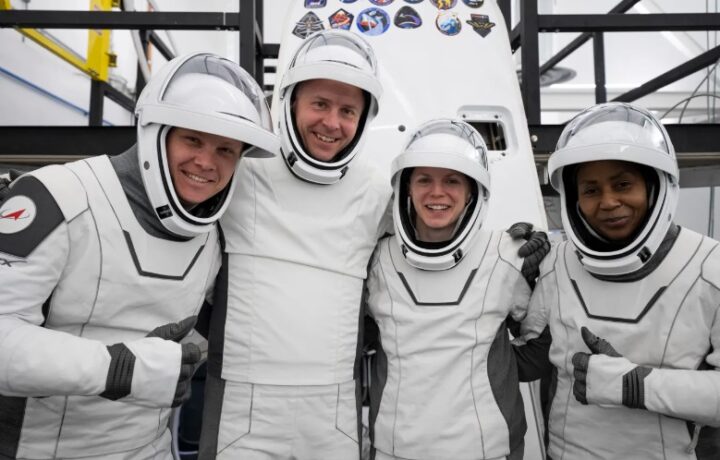When the SpaceX Crew-9 mission launches next month, it will be the tenth flight of the Dragon spacecraft – but it will be far from routine. Each manned flight comes with risks, of course, but this will mark the first time an active United States Space Force Guardian will be launched into space.
Colonel Nick Hague, who is also the Crew-9 pilot, will be the second Space Force guardian in space however – as NASA astronaut and U.S. Air Force Colonel Michael Hopkins, commander of SpaceX’s Crew-1 mission, was sworn into the space service in 2020 while already on the International Space Station. Further confusing matters is that this will be Hague’s second spaceflight.
The Crew-9 mission will include NASA astronauts Commander Zena Cardman, and Mission Specialist Stephanie Wilson, as well as Roscosmos cosmonaut Mission Specialist Aleksandr Gorbunov. This will be the first spaceflight for both Cardman and Gorbunov and the fourth for Wilson.
“It’s an honor for me to be able to represent all those Guardians that are around the globe that do all those things behind the scenes that make human spaceflight possible, whether that’s launching us into space or it’s protecting us while we’re out there, by watching the skies and making sure things don’t run into us,” Hague said in an interview with Space.com in July 2024.
The launch was originally scheduled for August 18 but was delayed more than a month due to ongoing technical issues with the Boeing Starliner and launch pad availability. It is currently scheduled for no earlier than September 24, but given the active hurricane season, it could be pushed back further into the fall.
Different Launch Pad
When the launch finally occurs it won’t be from the NASA-run Kennedy Space Center (KSC), but instead will take off from the Space Launch Complex 40 (SLC 40) at the adjacent Cape Canaveral Space Force Station, which was used for 55 launches of rockets from the Titan family between 1965 and 2005. SpaceX acquired a lease for SLC 40 in 2007 and has transformed it into a high-volume launch site for its Falcon 9 rocket.
Though many launches have taken place from the Cape Canaveral Space Force Station, only one crewed launch has taken place there in more than five decades. That was on June 5, 2024 – the Crew Flight Test of the Boeing Starliner spacecraft. Before that, the last manned launch was the Oct. 11, 1968 launch of Apollo 7, the first manned flight of NASA’s Apollo program.
The reason for the relocation of the launch was also due to the issues with the Boeing Starliner, while the SpaceX Crew-9 mission had initially called for the use of Launch Complex 39A (LC-39A), the first of Launch Complex 39’s three launch pads at KSC. However, it was shifted due to the upcoming NASA Europa Clipper mission, which will launch from LC-39A in a 21-day window in September to October.
As Space.com also reported, this will be the first time Space Force launches one of its own personnel for the first time, “but they will be doing so from their own launch complex.”
After launch and docking, the Crew-9 will spend six months on the ISS before returning back to Earth.
Pacific Splashdown – The Spacecraft Cemetery!
At the completion of the mission, the Crew-9 will also be notable as it is scheduled to splash down in the Pacific Ocean in March of next year. That will be a first for a Crew Dragon mission to do so, as SpaceX and NASA shifted recovery operations to the Atlantic Ocean near the East Coast in 2019 to facilitate easier return of astronauts and cargo to KSC more quickly.
However, it required that the trunk module had to be jettisoned before reentry. The team expected the module would burn up, but there have been multiple cases of the trunk debris found on land. With a splashdown in the Pacific Ocean, the trunk will be attached to the reentry vehicle longer and then can be directed towards a remote area of the ocean where any debris that doesn’t burn up and survives will be unlikely to cause serious damage.
Fittingly that area east of New Zealand, which was determined to be the location farthest from any land, has earned the nickname “Spacecraft Cemetery.” The defunct Soviet Mir space station and cargo spacecraft to the ISS have been ditched in the waters. Though there have been considerations on the environmental impact that the discarded spacecraft have on marine life, the region is beyond the legal jurisdiction of any country.




